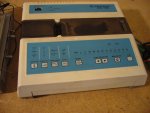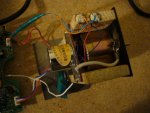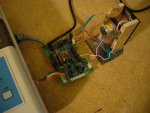- Joined
- Apr 28, 2009
- Messages
- 63
- Points
- 8
15625 Kpps (15.625 Mpps) Color Projector/ TV:
http://www.youtube.com/watch?v=NTpwygS8baY
3D Visual Effect by Kuntman's Scanner:
http://www.youtube.com/watch?v=yRNsjvzmKRI
Videos:
http://www.youtube.com/watch?v=DmCzjv7Q20s
http://www.youtube.com/watch?v=HleDvzLk7SI
Photos:
http://www.photonlexicon.com/forums/album.php?albumid=104
http://www.youtube.com/watch?v=NTpwygS8baY
3D Visual Effect by Kuntman's Scanner:
http://www.youtube.com/watch?v=yRNsjvzmKRI
Videos:
http://www.youtube.com/watch?v=DmCzjv7Q20s
http://www.youtube.com/watch?v=HleDvzLk7SI
Photos:
http://www.photonlexicon.com/forums/album.php?albumid=104











